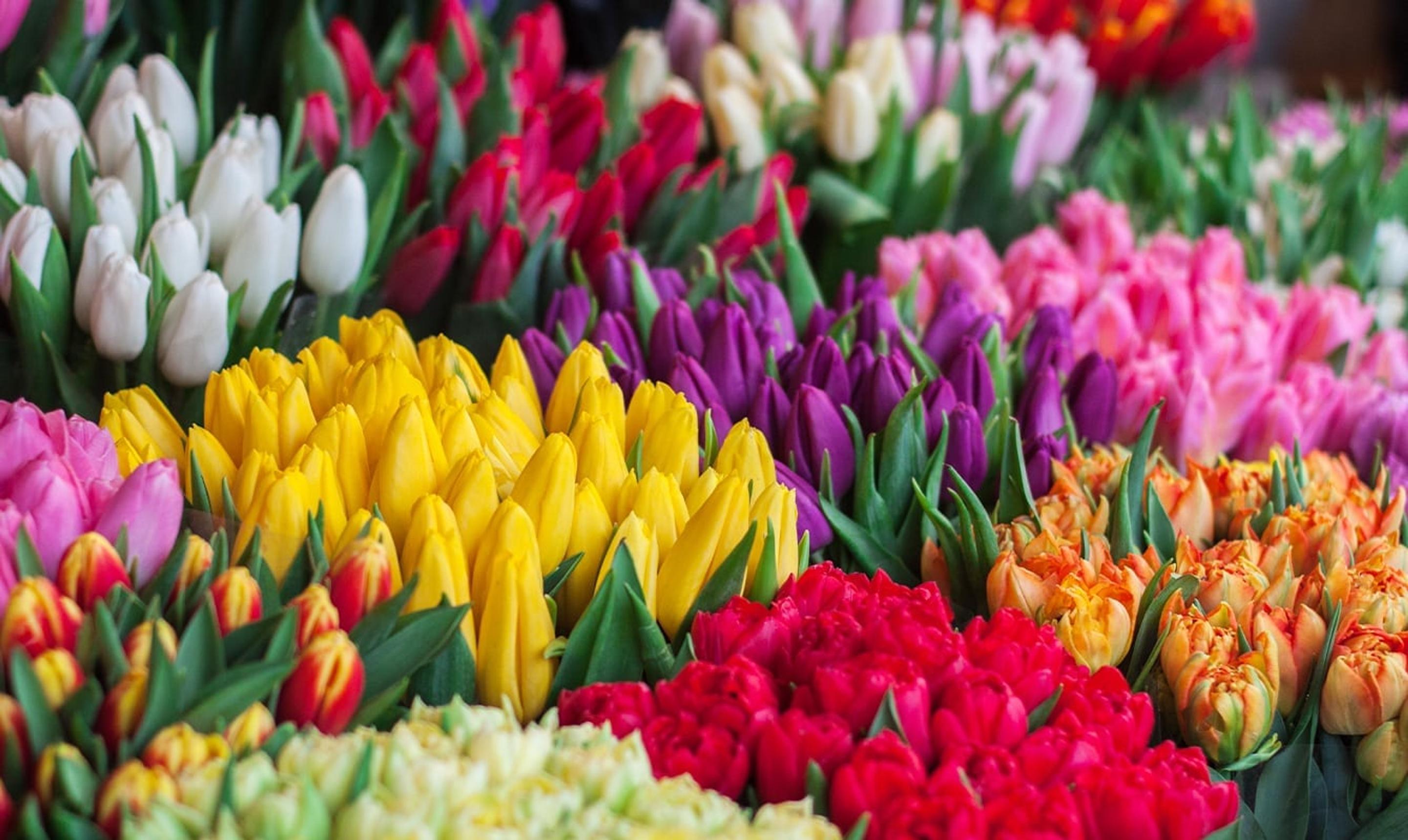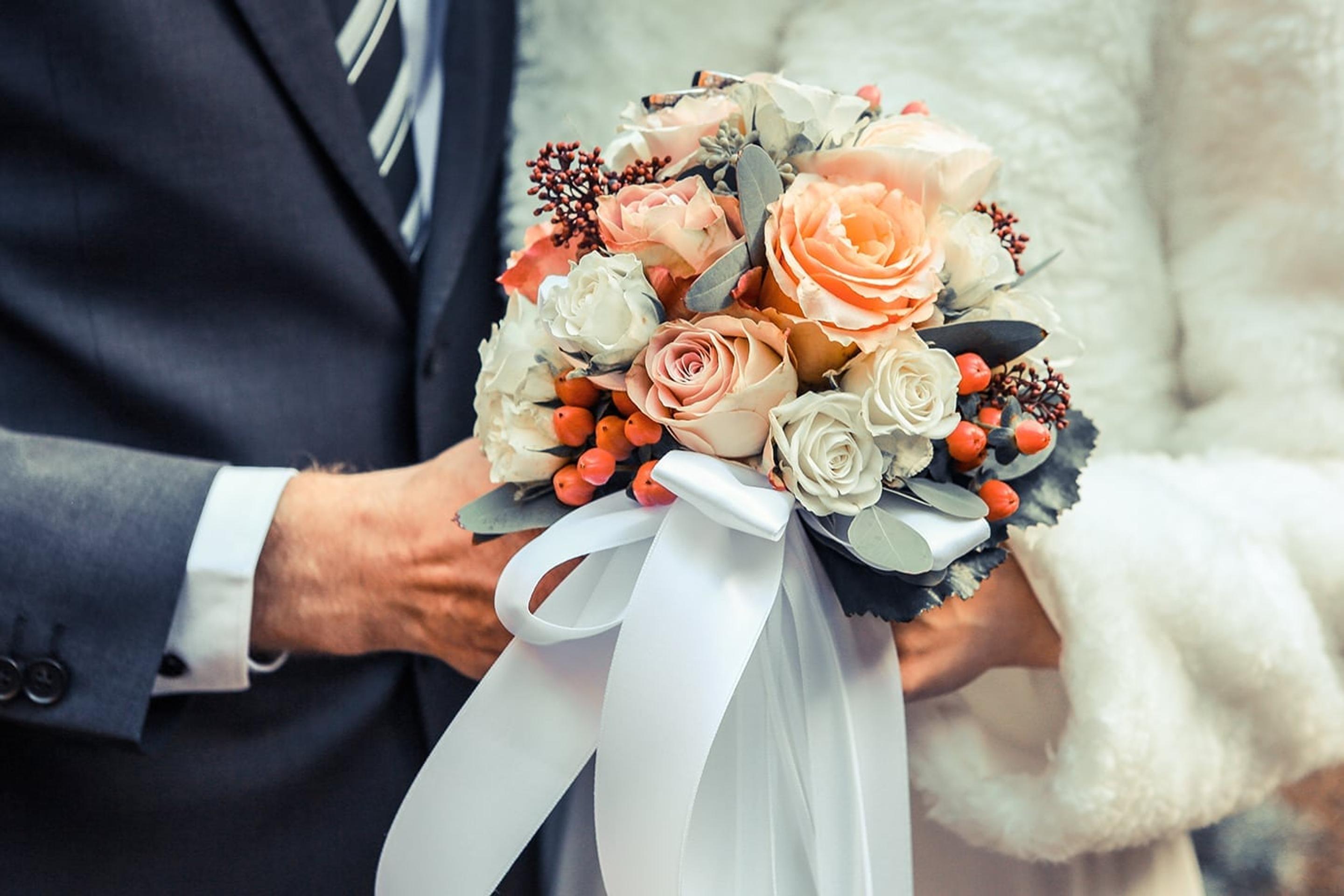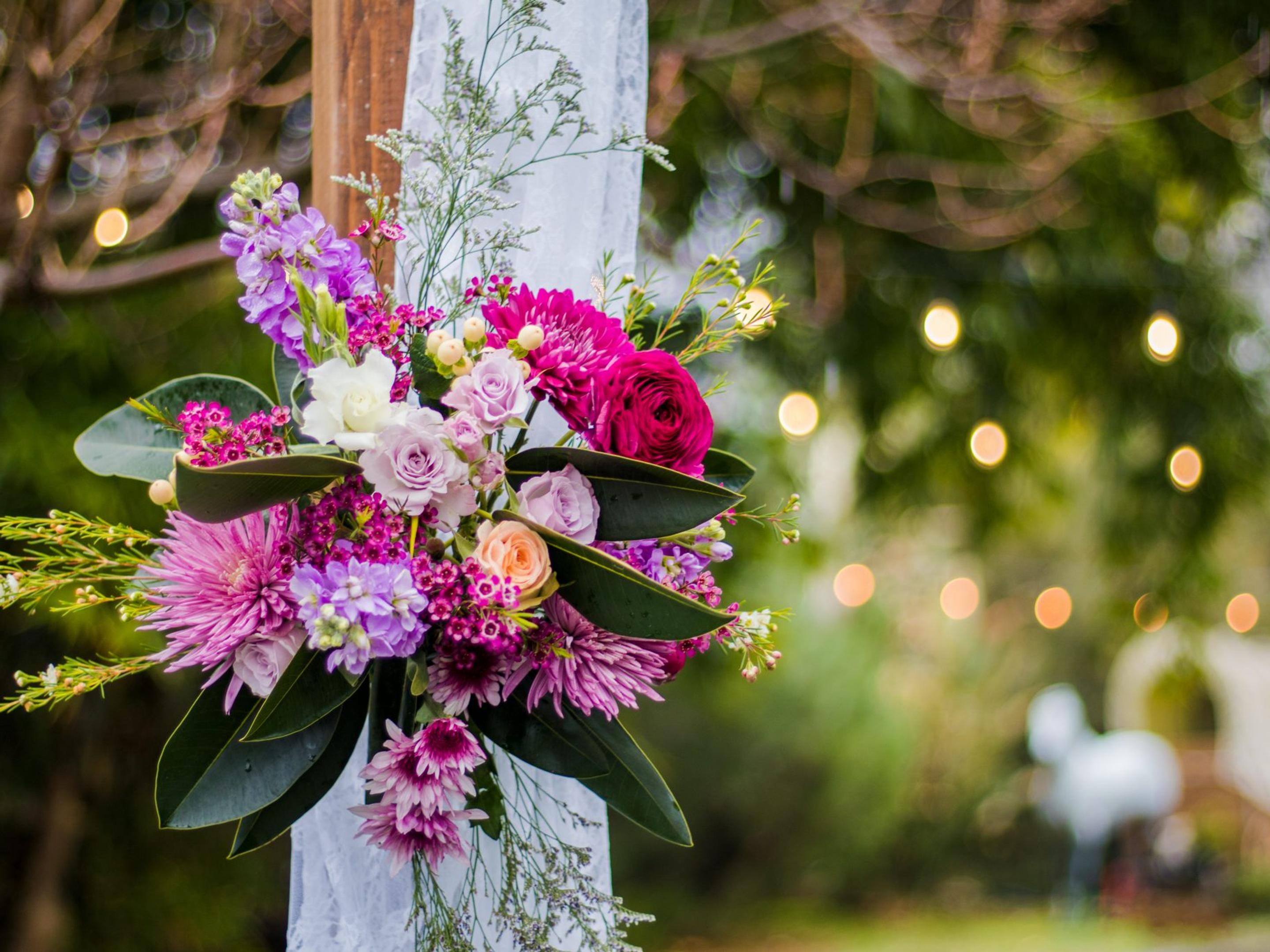
Wedding bouquets are one of the images that first come to mind when thinking of wedding days.
Particularly brides holding bridal bouquets.

From there, everything appears to have been touched by that look, as if a feeling of marital bliss has extended outward and transformed everything and everyone.
Which is the ideal effect of any floral theme!
So let’s get started by checking out the array of stunning wedding bouquets this world has to offer!
Cascade

Also known as the Waterfall bouquet and often made up using a combination of clematis, freesia and orchids, there is a literal cascade of flowers flowing down from the arrangement. Wedding gowns and accessories that work here are usually quite simplistic. Although very traditional, it’s a staple of many of today’s rustic wedding themed weddings.
Posy
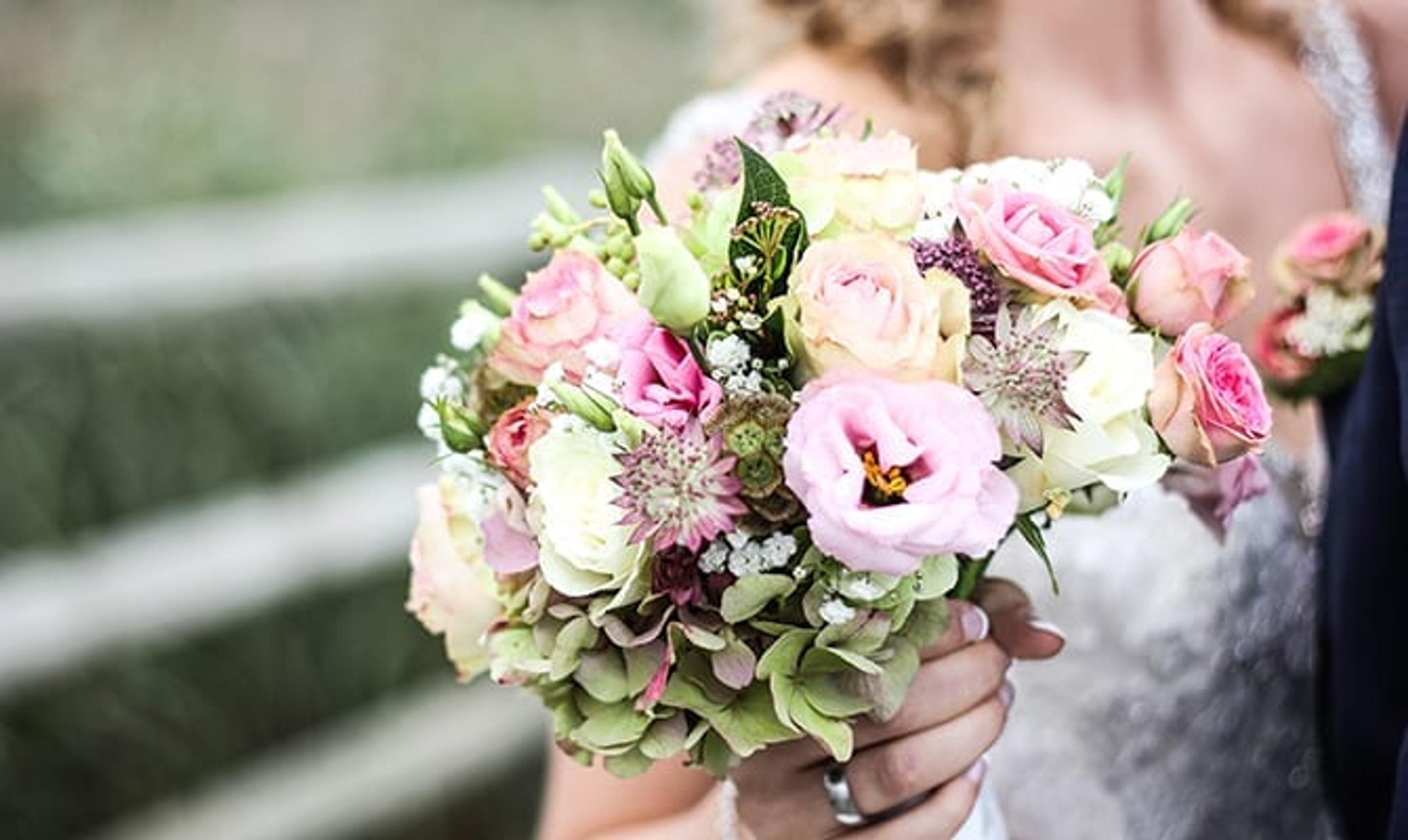
Often composed using dahlias, peonies and tulips, this compact bouquet is a classic. Small enough not to compete with your dress, it can actually keep attention focused on an extravagant dress design. Arranged in an attractive circular fashion with a domed shape and tied with a ribbon, it’s beautiful and effective.
Shield-Shaped

Image courtesy Katerina Mihalaki
Deceptively simple, these highly complex bridal bouquets can be carried in one hand and modestly allow the bride’s dress to keep most of the attention. Shield-Shaped is trendy and very elegant, with each stem and sprig individually hand-wired to perfection. Often combining bluebells, snowdrops and stephanotis, it looks stunning from all angles.
Biedermeier

Image courtesy Signe Collier
Named after a German style of interior decorating and popular since the 1800’s, this formal bridal bouquet is made up of a dense cluster of blooms, with each ring consisting of a single flower type or color. Dramatic versions can boast over four layers of different flowers, often featuring gerberas and pink and red roses.
Glamelia

Also known as the Composite bouquet, this stunning creation is composed of hundreds of real petals, all wired together to become one enormous flower. Strictly not a DIY project, the Glamelia is graceful, sophisticated, and complements elegant and simple dresses equally. Popular compositions often include camellias, lilies, and white roses.
Arm-Sheath
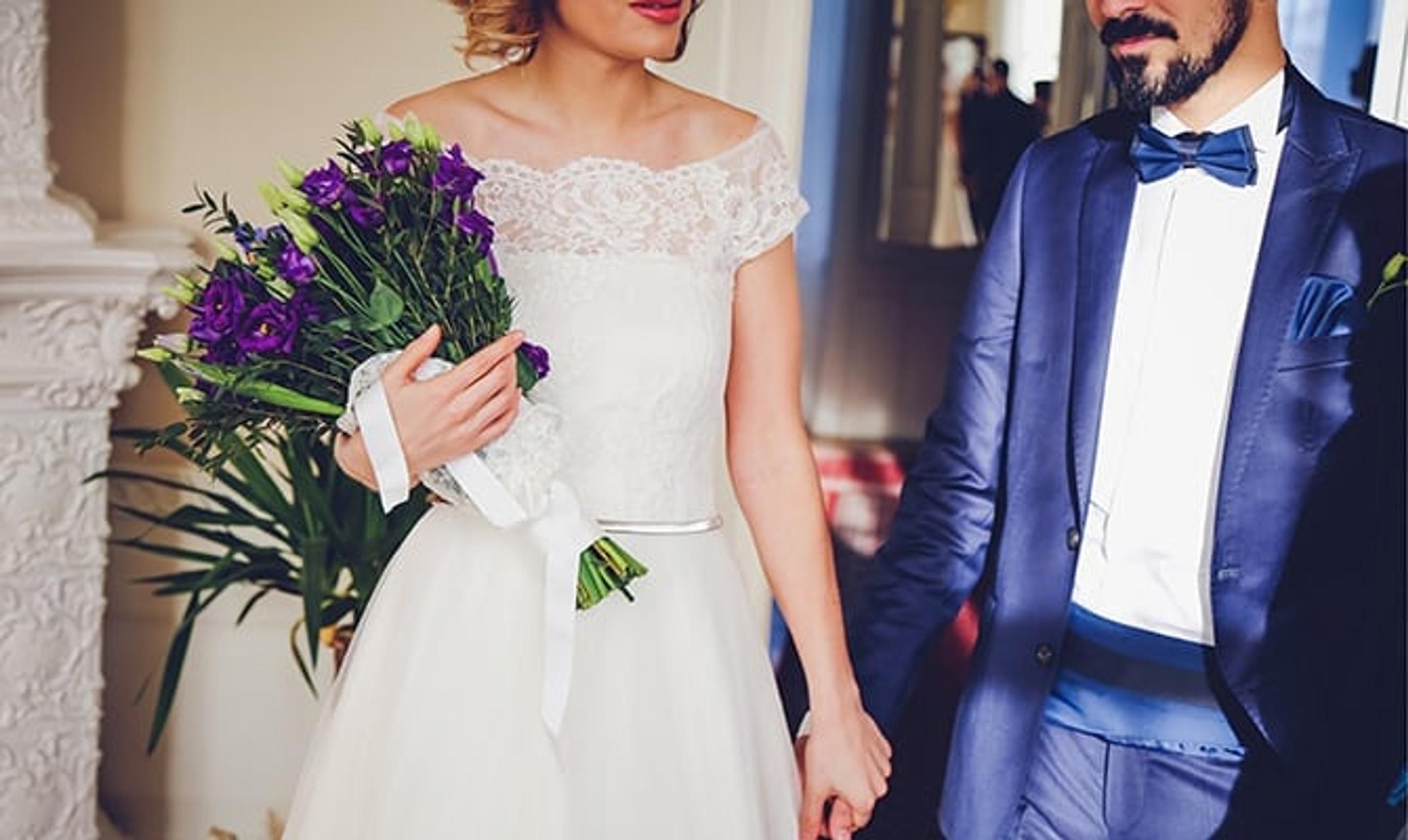
Dramatic and effective, this long-stemmed, vertically-shaped bouquet is also known as the Presentation or Pageant bouquet. Designed to be carried in the crook of the bride’s arm, it often combines greenery, calla lilies, sunflowers, orchids and irises. And it’s a natural complement to a tall bride in a streamlined or simple dress.
Hand-Tied
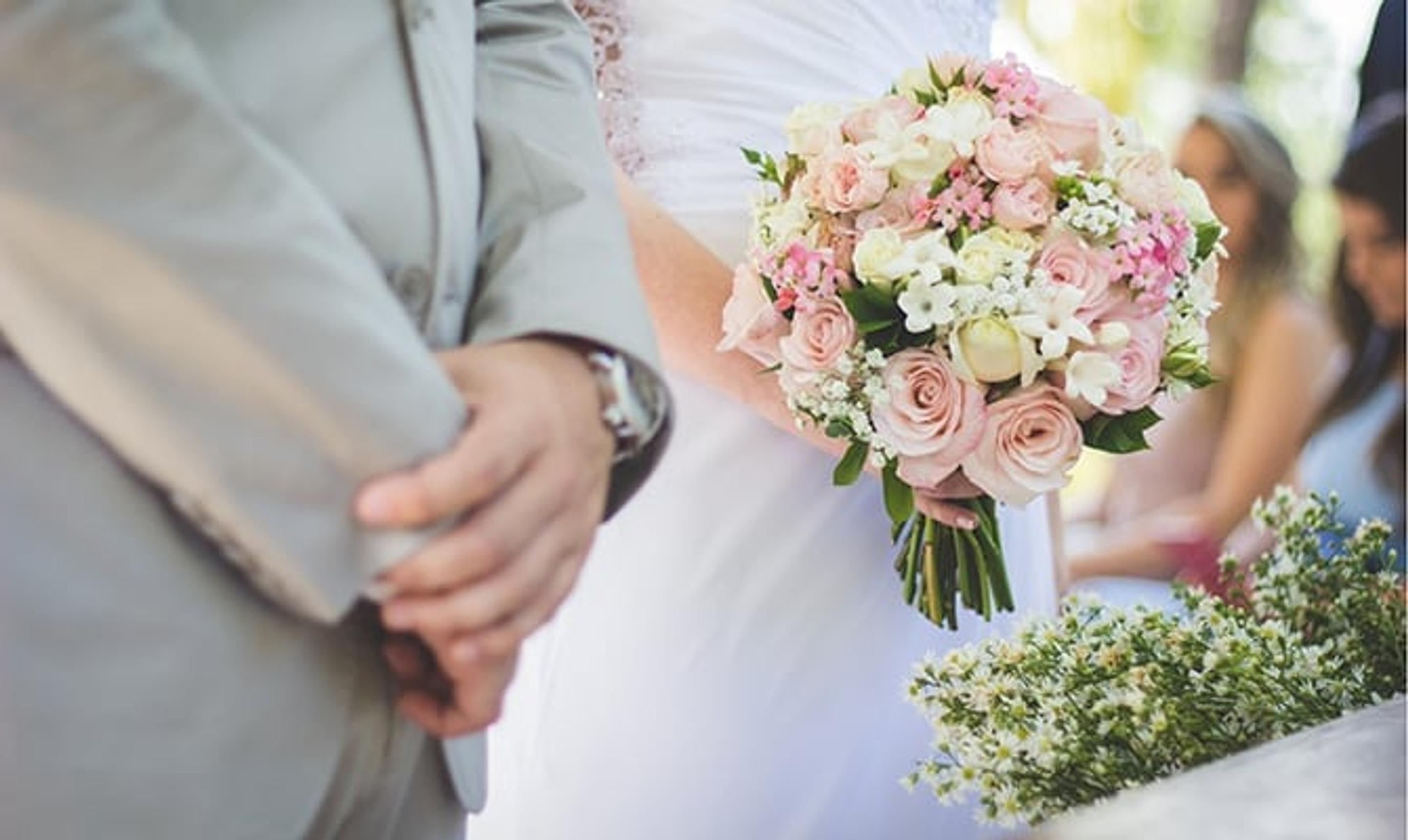
Many wedding bouquets use wire to create their look, so the hand-tied bouquet looks like an explosion of natural beauty by comparison. It includes a varied selection of flowers and greenery and is tied using vine, ribbon, or fabric. Unsurprisingly, it’s wildly popular for a rustic wedding theme or bohemian wedding theme.
Nosegay

Popular for bridesmaids in a smaller style, while the bride carries the larger version, the nosegay resembles the posy in its densely packed cluster. However, it’s distinguished by its use of greenery. Mothers of the bride and groom sometimes receive small nosegays with colors designed to match their dresses, rather than the wedding colors.
The Meaning of Flowers
Wedding flowers are an integral part of wedding themes. From season, to wedding colors, to wedding bouquets, to the wedding venue itself — each element should form a cohesive unit in order to represent you and your soulmate.
For example, if a red rose wedding bouquet is a passion (or represents passion for you!), you need to think about how that look fits your general wedding theme vision. If you fall in love with hydrangea wedding bouquets, or white wedding flowers, you need to think about how each look affects the overall vision and feel of your wedding theme.
Of course, the meaning of your wedding flowers also plays a part.
Before taking a deep dive into a list of various flowers and their meanings, let’s take a lingering look at a royal example.
On April 29, 2011, in London, England, Catherine Middleton arrived at Westminster Abbey to be married to Prince William.
Unlike the enormous, cascading arrangement Princess Diana carried on her wedding to Prince Charles in 1981, this bride carried a modest, shield-shaped bouquet, wired for structure, and containing seasonal blooms filled with personal meaning:
Lily of the Valley — Symbolic of trustworthiness; but is often said to represent the return of happiness. Possibly for Kate, this meant the return of trust, after some delicate early moments.
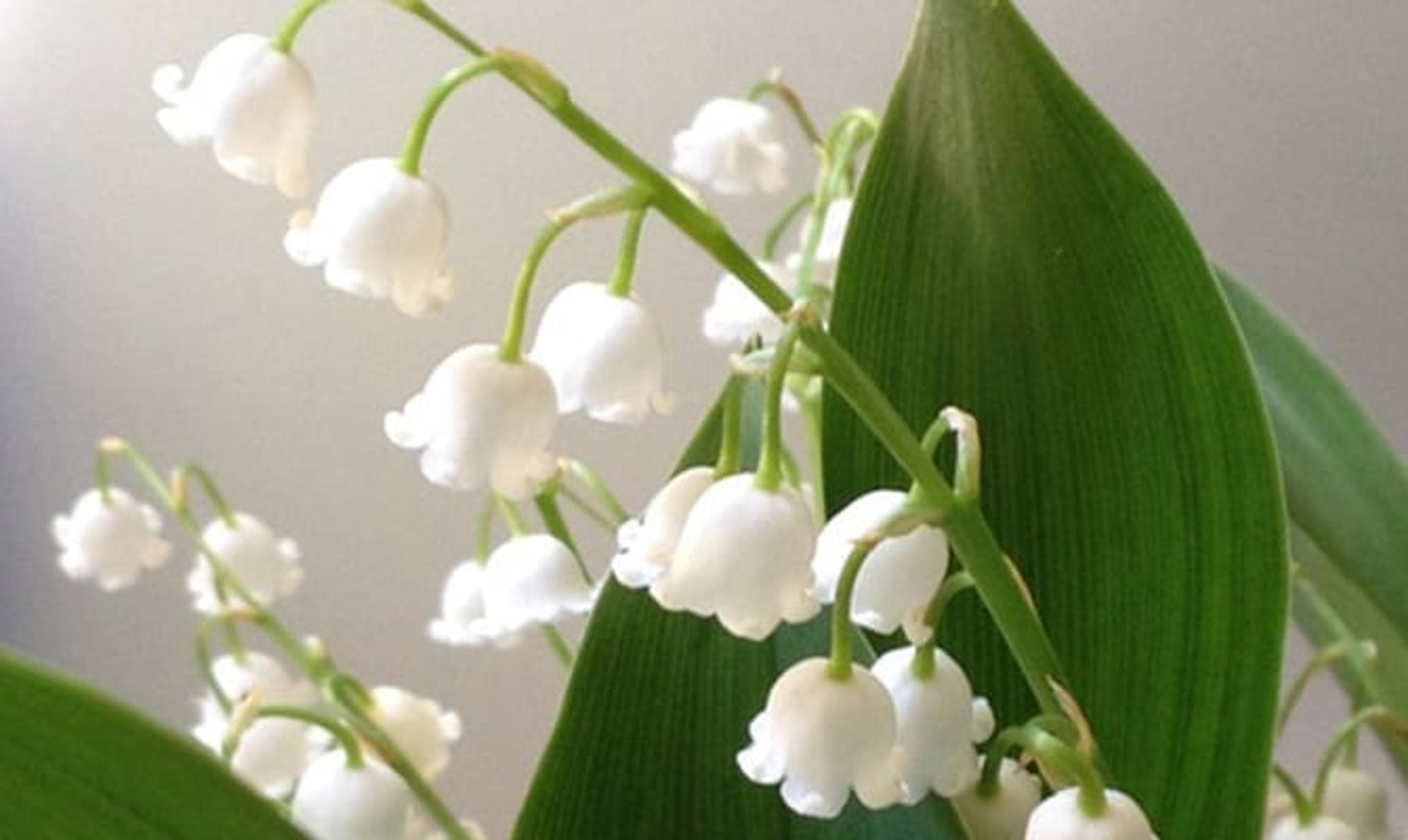
Sweet William — Often considered to be a symbol of gallantry, we can understand Kate’s desire to carry this flower, particularly when combining the meaning with the name!
Hyacinth — The Language of Flowers tells us the hyacinth symbolizes sport or play; but others consider it to represent the constancy of love. We’ll give Kate kudos for the latter.

Myrtle — Symbolic of love and marriage, every royal bride since Queen Victoria has carried a sprig of myrtle in her wedding bouquet — and all have taken it from Victoria’s royal garden, which recently opened to the public.
Ivy — Another symbol of marriage, ivy is also regarded as representing affection, fidelity, and friendship.
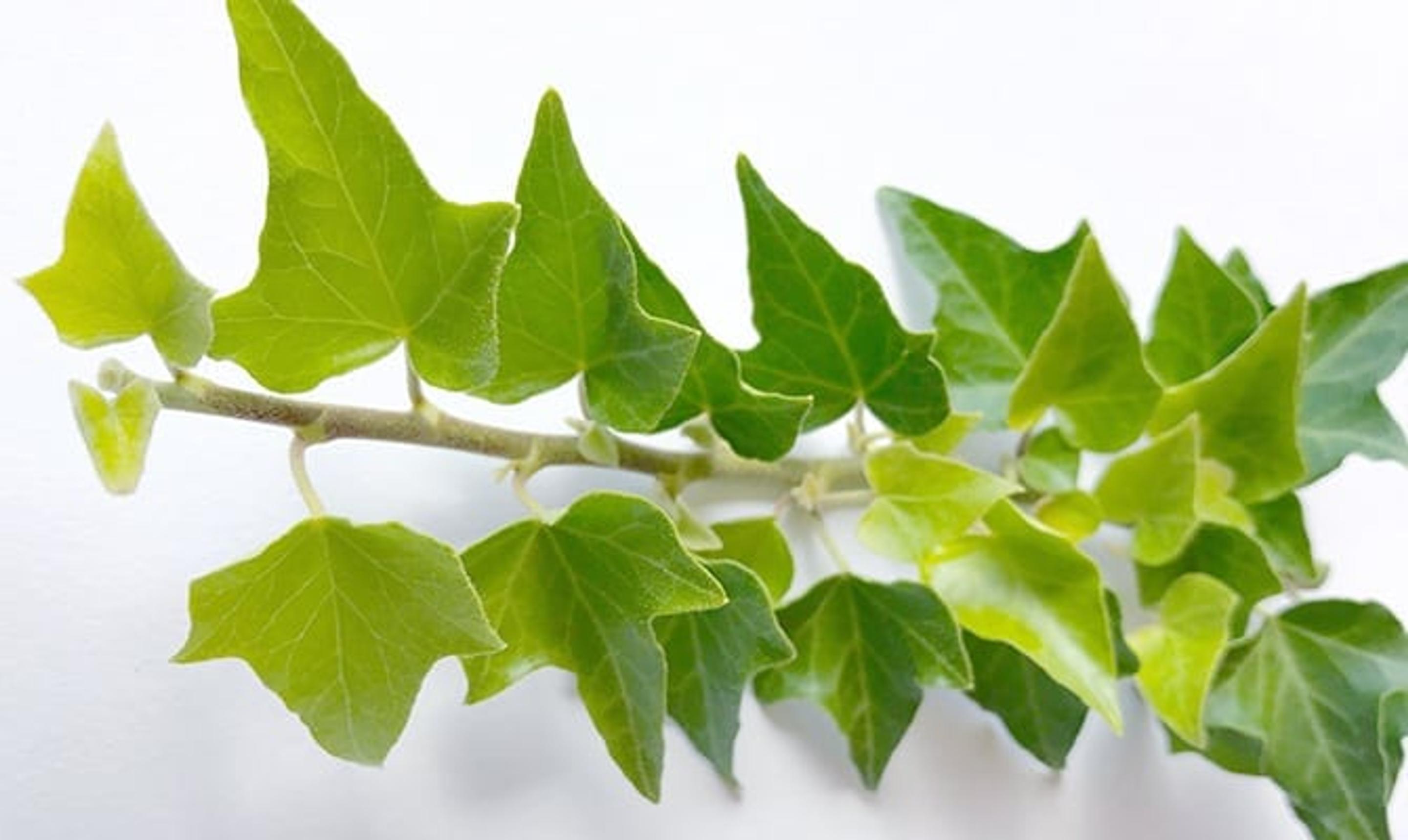
Impressed? So are we!
So let’s take a look at some more wedding flowers and their general meanings. Note: Flower meanings can depend on color, too, so keep in mind the below is an overview guide.
Which in the list below inspires you?
Rose — Love, joy, and beauty, dating back to the ancient Greeks and Romans. The rose also represents sympathy and sorrow, as well as the keeping of secrets.
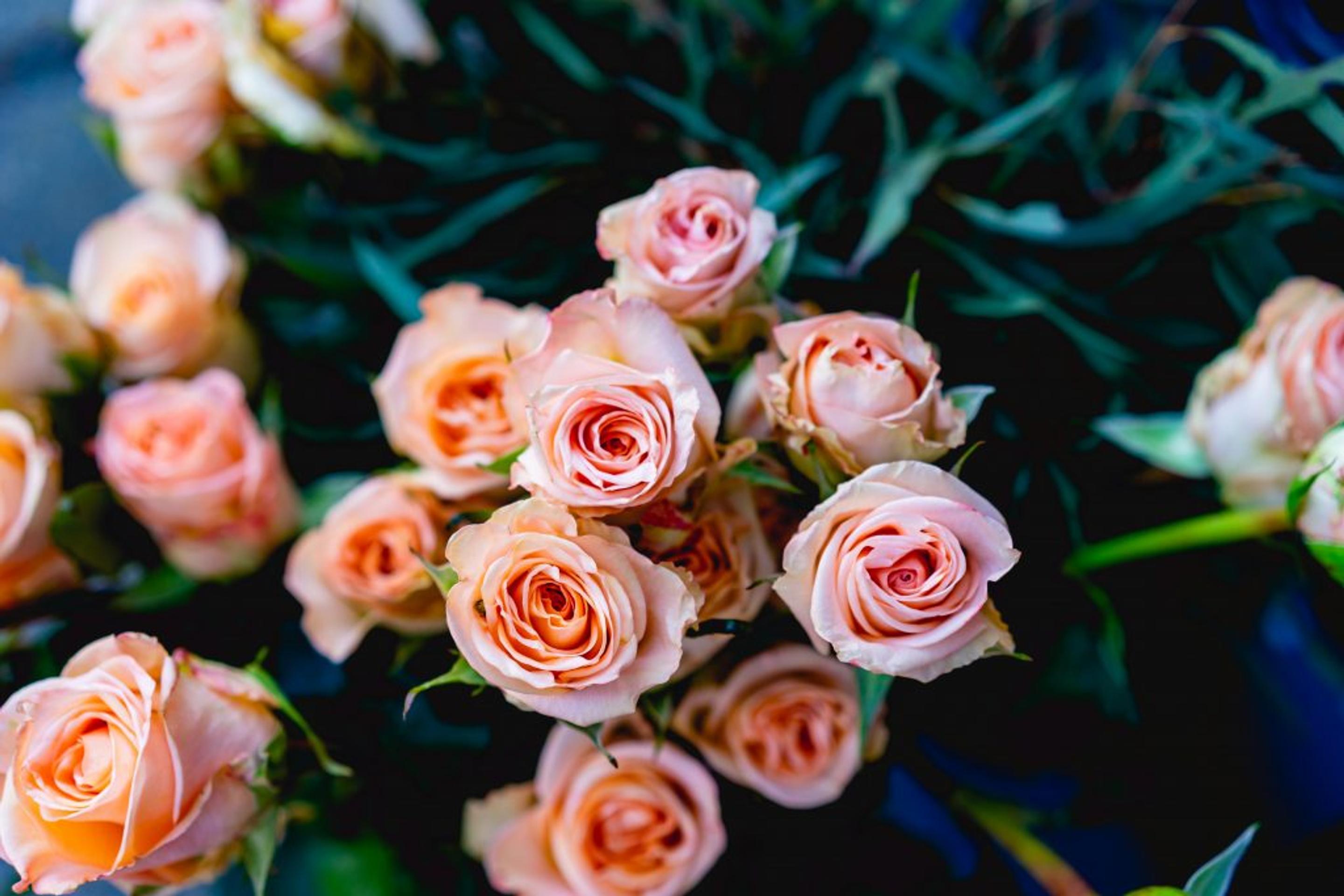
Dahlia — Change, lasting bonds and commitments, grace under pressure, inner strength, and uniqueness. Dahlias enjoyed high popularity in 2017.
Tulip — Enduring love and undying passion, combined with prosperity, indulgence and royalty!
Lily — Purity (white), prosperity (pink), honor, and devotion. In some cultures the lily is considered to have to ability to relieve heartache and bring luck.
Daisy — True love, new beginnings, and purity. Daisies also pair well with almost all other flower types.
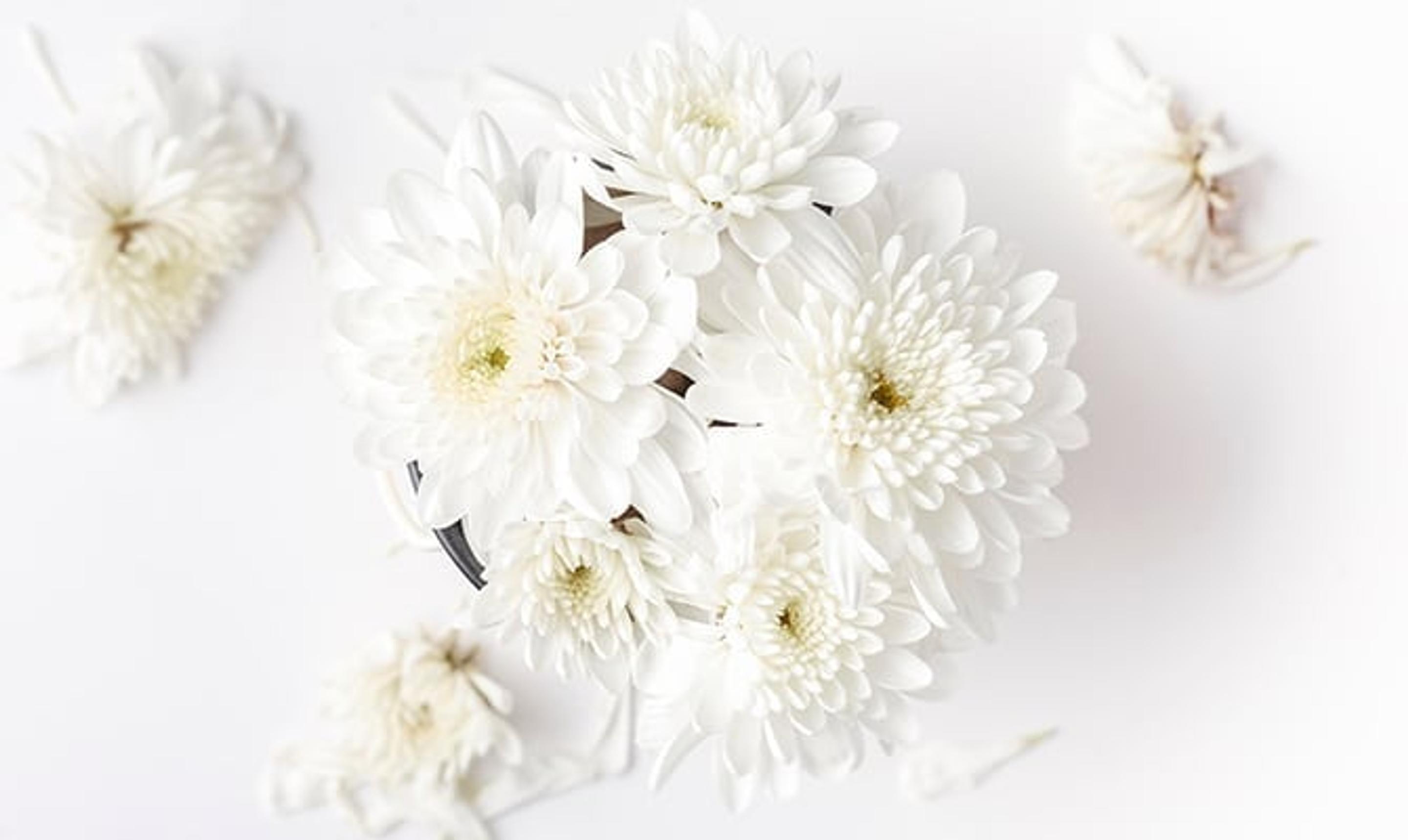
Daffodil — New beginnings, rebirth, and the coming of spring. It also represents creativity, inspiration, renewal, and forgiveness.
Hydrangea — Heartfelt and honest emotions, gratitude, and the development of deeper understanding between two people.
Carnation — Love, fascination, and distinction. Possibly one of the oldest cultivated flowers in the world, the carnation enjoys a rich history of symbolism, and are known as flowers of the gods.
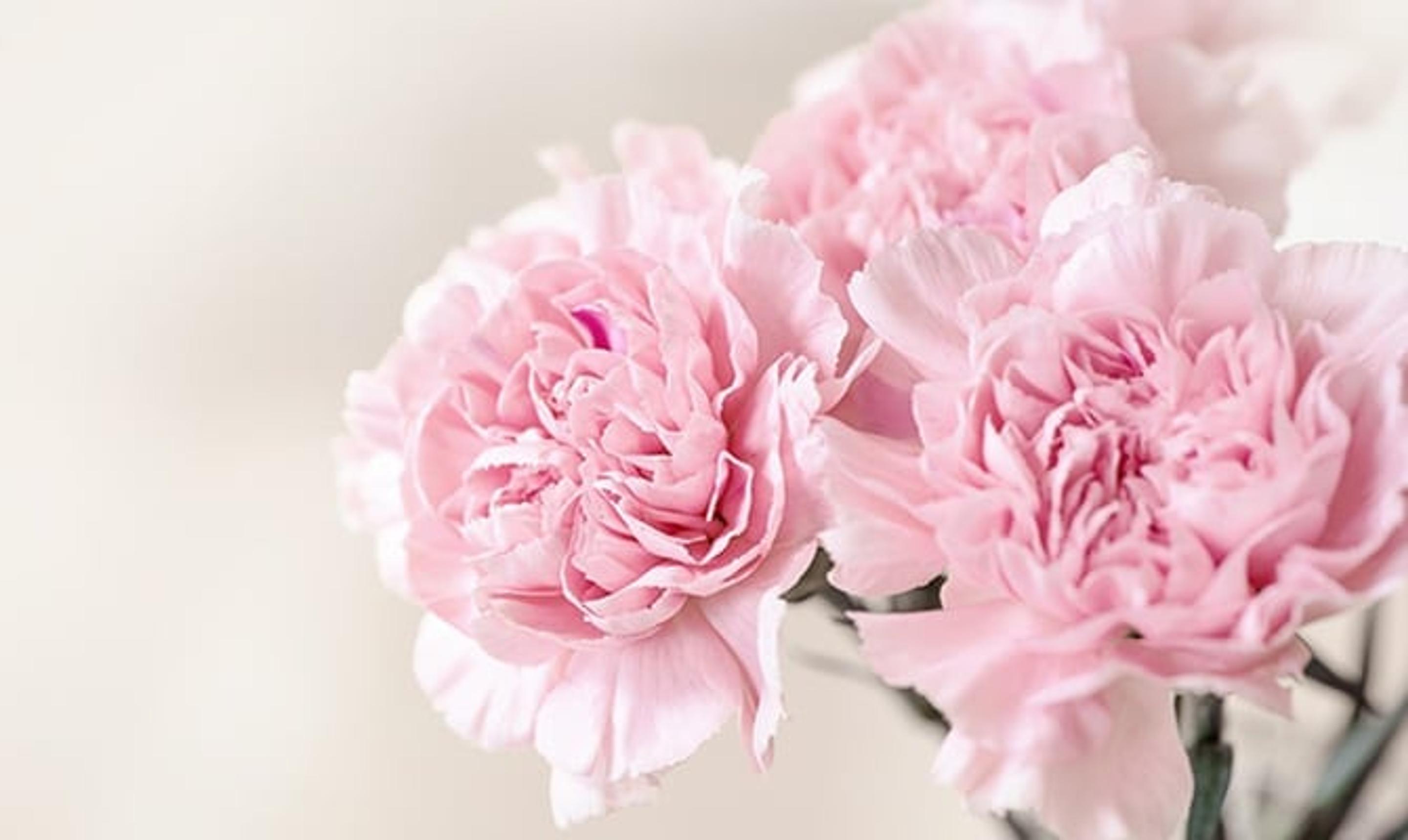
Sunflower — Adoration, loyalty, longevity, and lasting happiness. Rich in meaning across cultures, the sunflower also symbolizes power and strength in the vibrant orange and red varieties.
Honeysuckle — Devotion, the bonds of love, sweet disposition, and happiness. Poet Robert Frost wrote of honeysuckle in his sensual poem “To Earthward” as a symbol of intense love.
Purple Iris — Royalty, faith, wisdom, hope, and valor. Named after the Greek goddess Iris, it also symbolizes power and inspired the fleur-de-lis, the national symbol of France.
Peony — Beauty, riches, romance, and honor. The official emblem of China, its Chinese name translated is “most beautiful.” It also represents bashfulness to some, particularly in white or pale pink colors.

Planning for Perfection
Apart from the basics, like deciding on a budget for your wedding flowers, a good starting point is to consider the season of your wedding date. Aside from the natural attributes seasonality provides, budget considerations also come into the equation.
Out-of-season flowers can come with a higher price tag.
Here’s a list of flowers by season:
Spring
- Anemone
- Bells of Ireland
- Casa Blanca Lily
- Daffodil
- Daisies
- Delphinium
- Hyacinth
- Hydrangea
- Lilac
- Lily of the Valley
- Orchid
- Peonies
- Ranunculus
- Snapdragon
- Stargazer Lily
- Sweetpea
- Tulips
- Viburnum
- Wax Flower
Summer
- Alstroemeria
- Bells of Ireland
- Chrysanthemum
- English Lavender
- Forget-Me-Nots
- Freesia
- Gerbera
- Hydrangea
- Iris
- Larkspur
- Liatris
- Orchid lily
- Snapdragons
- Sunflowers
Fall
- Amaryllis
- Aster
- Chrysanthemum
- Dahlia
- Freesia
- Statice
- Zinnia
Winter
- Amaryllis
- Anemone
- Bells of Ireland
- Cosmos
- Forget-Me-Not
- Gardenia
- Holly
- Jasmine
- Poinsettia
- Ranunculus
- Sweetpea
- Stargazer Lily
- Tulip
Year Round
- Bachelor’s Button
- Calla Lily
- Carnations
- Delphinium
- Eucalyptus
- Gardenia
- Gladiolus
- Heather
- Lily of the Valley
- Orchid
- Protea
- Rose
- Scabiosa
There are no hard and fast rules. This is your day and the look you choose represents you and your soul mate. Either a concrete wedding theme or using the beauty of the season, are both solid approaches and can have stunning results.

But what about the logistics?!
Here’s a brief list of needs for your wedding flowers.
- Bridal bouquet
- Bridesmaid bouquets
- Ceremony flowers
- Reception flowers
- Corsages
- Boutonnieres
- Additional Decor

Beauty, Budgets, and Balance
The list above could spark a desire to have your wedding flowers in abundance in every conceivable area. It’s one thing to imagine an empty space overflowing with beautifully designed arrangements and various centerpieces, another to view the effect of this abundance of beauty and hard spending with those now empty spaces packed with guests.
Spending less could entice a higher level of awe and admiration.
Think about the areas where magical moments will take place. Obviously, the whole “I do” area is one to concentrate on!
- The framing of the first dance.
- Your bridal bouquet, boutonnieres or other wearables.
- Then think about centerpieces, placed for maximum effect in the right places.
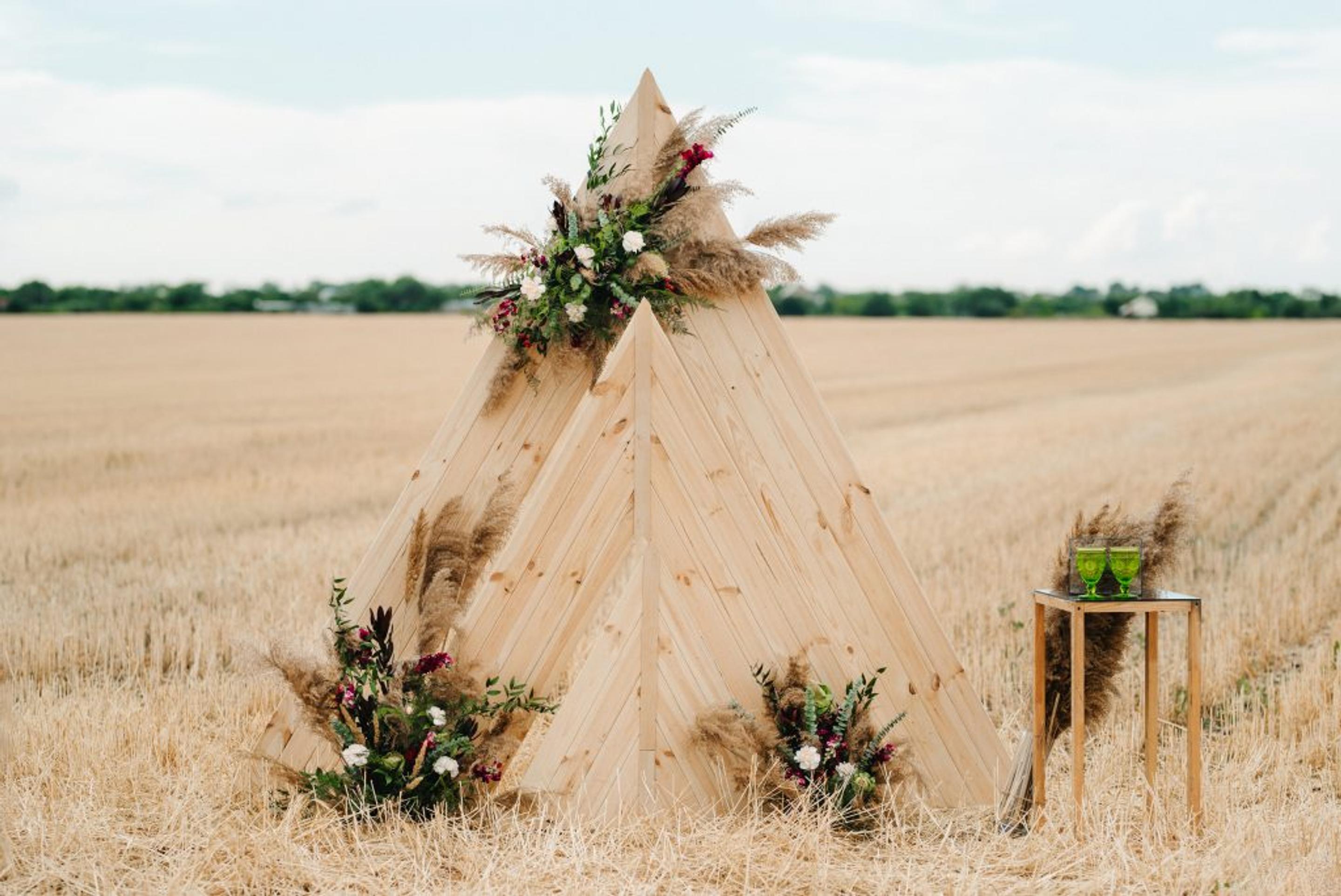
A series of jaw-dropping statement pieces or an overlooked surplus?
So keeping budget in mind, steering toward seasonal wedding flowers as part of your general wedding theme, then designing your overall floral look based on smart use of space, can work wonders.
However, if your florist recommends flowers in a certain area, pay attention. We’ll bounce back to that in a moment.
Another way to create an interesting variety, while thinking of your budget, is to mix and match long, low centerpieces with, for example, elevated bouquets.
Clusters of single blooms can look amazing by virtue of creating an eye-catching contrast. Greenery is also extremely popular today and highly effective at creating contrasts and drawing attention to particular designs.

Now everything is being noticed and appreciated.
Success!
From your big day wedding theme ideas to the bridal bouquet, all sorts of mixing and matching can combine your budget and vision for amazing outcomes. With that in mind, let’s do a general breakdown that you could talk to your florist about:
Luxury:
Garden Roses, Vanda Orchids, Peonies, Tropical flowers like Protea and Anthurium, Colored Hydrangea (except light blue), Calla Lilies, Stephanotis.
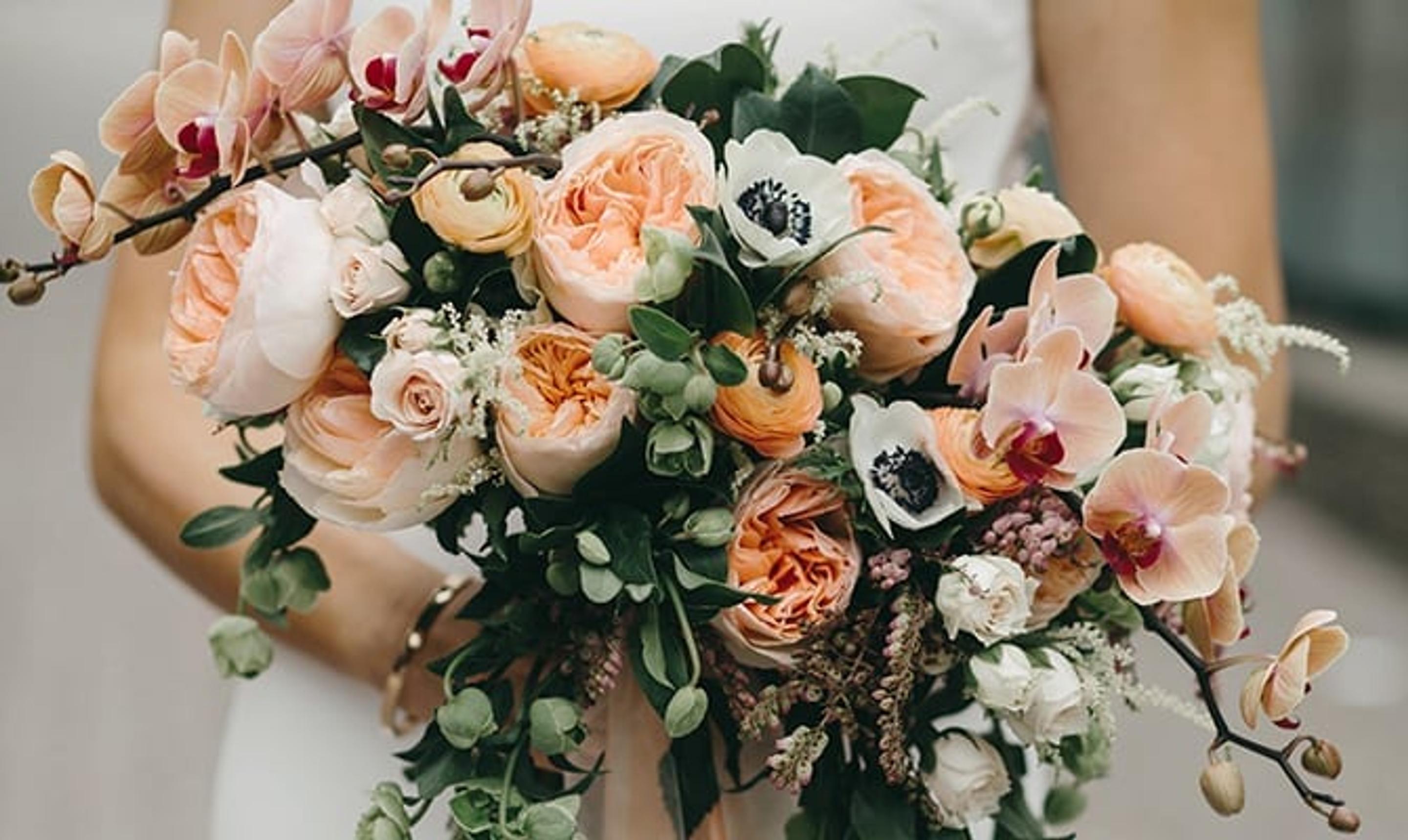
Premium:
Cymbidium Orchids, Dendrobium Orchids, Dahlias, Spray Roses, Standard Roses, Ranunculus, White & light blue hydrangea, Dusty Miller, Anemones, Exotic Foliage, Italian Pittosporum and Italian Ruscus.
Standard:
Stock, Lemon leaf, Sunflowers, Gerbera Daisy, Delphinium, Spider Mum, Larkspur, Eucalyptus, Israeli Ruscus.
Economical:
Accent Flowers like Waxflower or Baby’s Breath, Iris, Alstroemeria, Carnations, Leather fern.
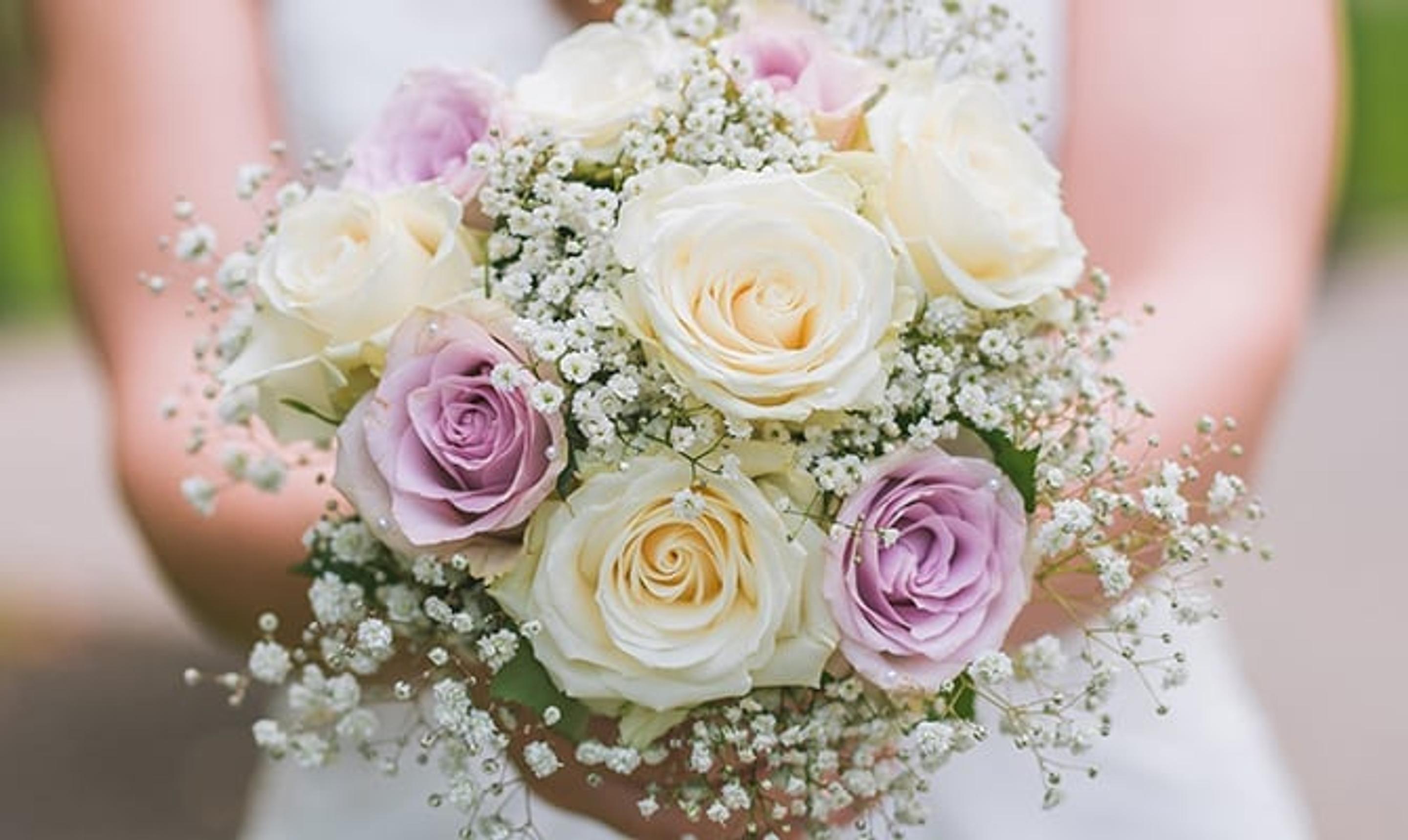
Words of Wedding Wisdom
Every bride hears words of wisdom about all sorts of interesting areas of life. So we’ll offer some of our own.
Only ours involves your florist and you!
If you have a perfect vision of how your big day should look, listen carefully to what your florist thinks about it. You want your big day to be as dreamlike as possible. But attempting to drag your vision into the real world against professional advice could lead to huge disappointment.
For example, your florist could take one look at your wedding venue and know that the vision you’ve created won’t work, at least not in the way you’re envisioning it. Pay attention and you’ll win.
Professional florists have real world experience in the vision business.
Listen carefully to their responses. The chances are that whatever they suggest will work for you on your big day, during the season in which it takes place, and in your chosen wedding venue.
There’s a difference between a vision and an unforgettable reality tailored around you.
Your day, your way — yes!
Still, words of wisdom embraced bring their own rewards.
The most important thing to remember is that you’ve already found your soulmate —and that’s the hardest part!

So, Congratulations!
Not quite sure what wedding style best fits your vision? Check out Flower Mag’s. Find Your Wedding Flower Style quiz to help give you a better idea!

